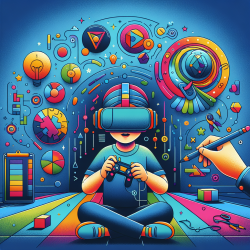Introduction
Autism Spectrum Disorder (ASD) affects approximately 1% of children, impacting their social, communication, and behavioral skills. Recent advancements in therapy have introduced a novel approach combining Virtual Reality (VR) and Cognitive Rehabilitation (CR) to address specific cognitive impairments, particularly contextual processing. This blog explores how practitioners can leverage these findings to enhance their therapeutic strategies.
The VR-CR Approach
The Virtual Reality-Cognitive Rehabilitation (VR-CR) approach, initially developed for ADHD, has shown promise in engaging children with autism by providing structured, individualized activities that capitalize on their strengths while addressing weaknesses. VR systems are immersive and interactive, allowing children to engage with virtual environments through multiple sensory channels, thereby improving their attention and motivation.
Understanding Contextual Processing
Contextual processing involves determining an object's meaning or relevance within a particular context. It requires abstraction (identifying relevant qualities) and cognitive flexibility (adapting to changing contexts). Children with autism often struggle with these tasks, which can be assessed through categorization tasks and other specialized tests.
Research Findings
The pilot study by Wang and Reid demonstrated the efficacy of the VR-CR intervention in improving contextual processing in children with autism. Four children participated, showing statistically significant improvements in contextual processing and cognitive flexibility. The study utilized a single-subject design with nonconcurrent multiple baselines, providing robust evidence for the intervention's effectiveness.
Practical Implications for Practitioners
- Incorporate VR-CR Techniques: Practitioners should consider integrating VR-CR methods into their therapy sessions. The immersive nature of VR can enhance engagement and motivation, crucial for effective therapy.
- Focus on Contextual Processing: By targeting contextual processing, therapists can help children with autism improve their ability to understand and interact with their environment.
- Encourage Cognitive Flexibility: Use exercises that promote cognitive flexibility, allowing children to adapt to new situations and stimuli more effectively.
- Collaborate with Researchers: Engage with ongoing research to stay updated on the latest findings and methodologies in VR-CR interventions.
Conclusion
The VR-CR approach offers a promising avenue for improving contextual processing in children with autism. By incorporating these techniques, practitioners can enhance therapeutic outcomes and contribute to the broader understanding of autism interventions. For those interested in exploring this approach further, larger-scale studies are warranted to validate these findings and expand their applicability.
To read the original research paper, please follow this link: Using the Virtual Reality-Cognitive Rehabilitation Approach to Improve Contextual Processing in Children with Autism.










